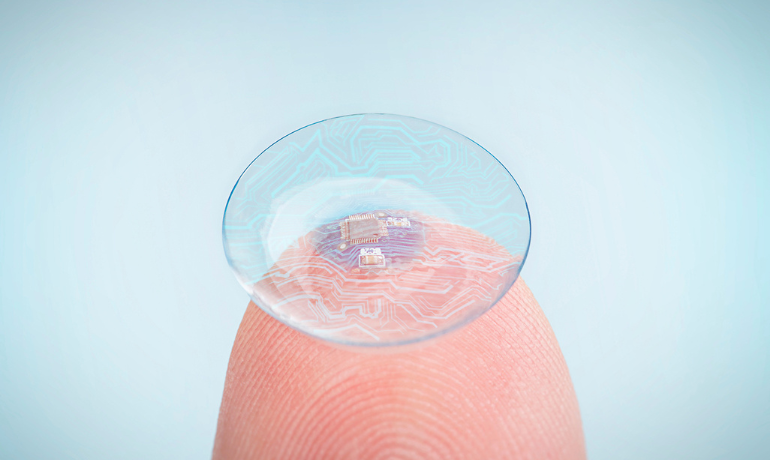When it comes to vision correction, the materials used in contact lenses have undergone a remarkable transformation over the past century. From glass to sophisticated polymers, the journey of contact lens materials reflects a relentless pursuit of improving vision and comfort for lens wearers. Today, we stand on the brink of another leap forward in lens technology as we head into 2024.
A Timeline of Contact Lens Materials
Scleral Lenses: From the 1880s to 1936 – The genesis of contact lenses can be traced back to the scleral lenses of the 1880s. These lenses covered the entire sclera, the white part of the eye, and were initially made of blown glass. By 1936, advancements led to lighter scleral lenses that combined glass and plastic, offering more comfort and practicality to users.
PMMA Lenses: The 1940s Breakthrough – The 1940s saw the introduction of PMMA (polymethyl methacrylate) lenses. Known for their durability, these were the first widely used ‘hard’ contact lenses. They marked a significant step forward but had limitations in oxygen permeability.
Toric Lenses: Correcting Astigmatism since 1978 – Toric lenses revolutionized vision correction by offering a solution for astigmatism. Available since 1978, these lenses have specialized shapes to correct the uneven curvature of the cornea characteristic of astigmatism.
Rigid Gas Permeable (RGP) Lenses: Oxygen Permeability in 1979 – Introduced a year later, RGP lenses combined the clarity of PMMA lenses with increased oxygen flow to the cornea, mitigating the risks of corneal suffocation associated with earlier materials.
Progressive Lenses: A Milestone Coined in 1963 – Although the term ‘progressive lenses’ was coined in 1963, it wasn’t until later that these lenses became a mainstay in eyewear, offering a gradient of lens powers to correct presbyopia without the traditional bifocal lines.
Daily Disposable Lenses: The 1995 Revolution – Daily disposables emerged in 1995, offering unparalleled convenience and hygiene. These lenses are used once and then discarded, reducing the risk of infections and eliminating the need for cleaning.
Silicone Hydrogel Lenses: A 21st Century Innovation – In 2002, silicone hydrogel lenses were introduced, representing a leap in contact lens comfort. Their high oxygen permeability and lower dehydration rates made them an instant hit among wearers.
What’s New in 2024: The Forefront of Contact Lens Technology
As we delve into 2024, contact lenses technology continues to evolve. We are now seeing lenses that are not only designed to be more comfortable and healthier for the eye but also smarter. Features like built-in sensors to monitor eye health and augmented reality capabilities are being developed. Moreover, the focus on sustainable materials and production methods is intensifying, reflecting a commitment to both vision health and environmental stewardship.
The Future of Vision Correction
The horizon for contact lenses includes innovations that promise to transform vision correction further. With advances in biotechnology, we may soon see lenses that deliver medications directly to the eye or lenses that adapt to light conditions. The possibilities are expanding, and the future is bright for contact lens wearers.
Stay Ahead of the Curve with Rancho Santa Fe Optometry
Advancements in contact lens technology are exciting, but they also underscore the importance of professional eye care to tailor these innovations to your unique vision needs. At Rancho Santa Fe Optometry, we’re dedicated to providing you with the latest in contact lens technology.
Ready to experience the cutting-edge of contact lens materials? Request a contact lens exam by calling us at (858) 756-3210. Alternatively, you can request an appointment online at your convenience.
The evolution of contact lenses is a testament to the ingenuity and commitment of researchers and eye care professionals. As we look ahead, Rancho Santa Fe Optometry is excited to bring these advancements to our patients and continue to lead the way in eye care.
At Rancho Santa Fe Optometry we offer comprehensive eye examinations for all ages. With a focus on children’s vision and vision therapy, our doctors test for visual acuity, visual efficiency skills and visual information processing starting in early infancy. The practice also provides diagnosis, treatment and management of diseases that affect the human eye and visual system, including dry eye syndrome, diabetic retinopathy, cataracts, macular degeneration and keratoconus.


